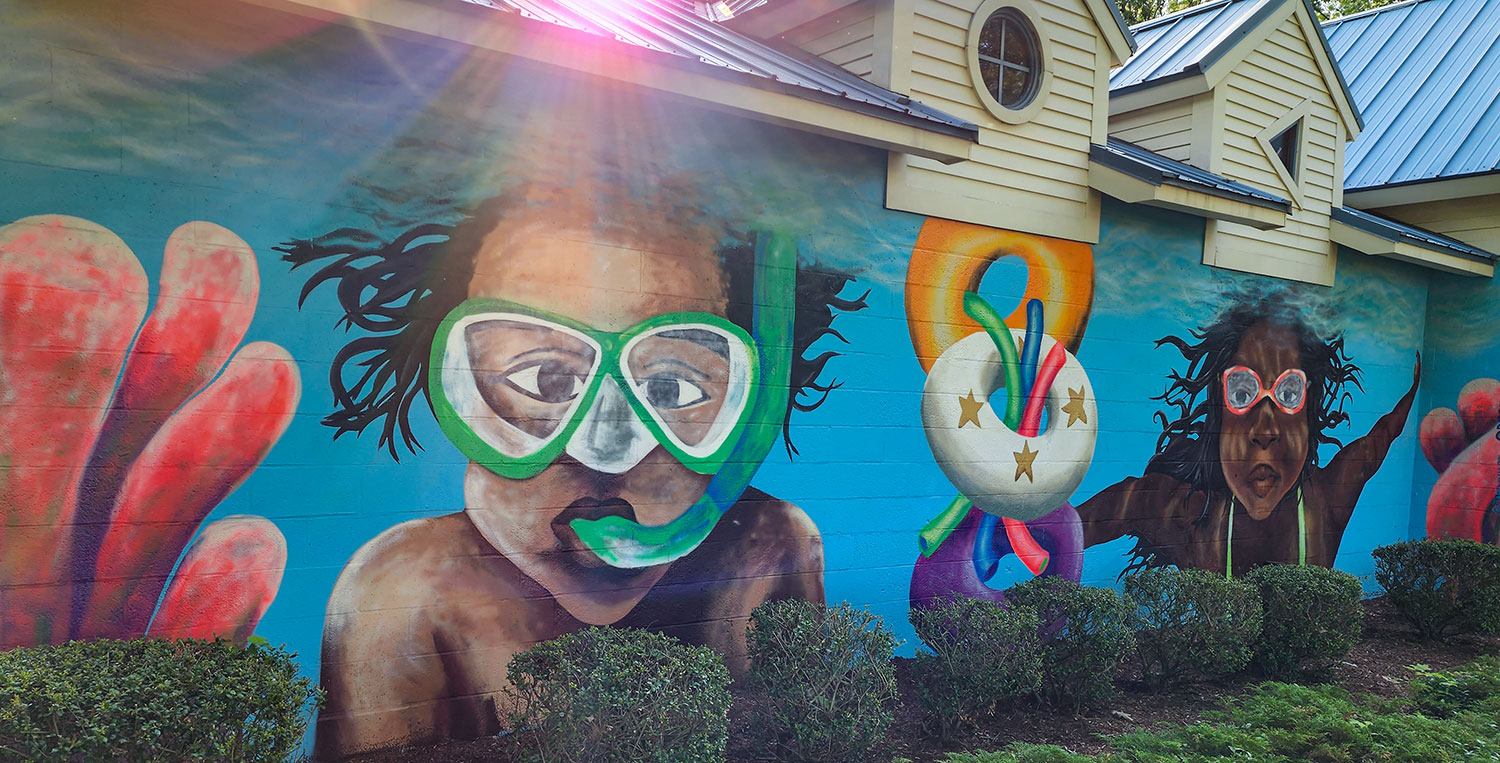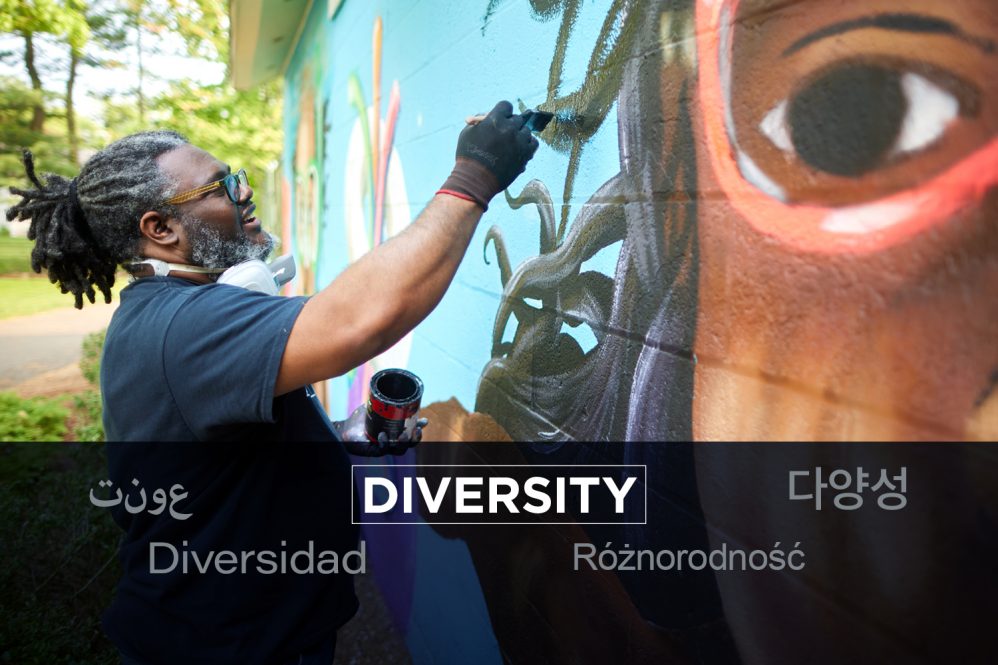Andre Rochester’s role as UConn Health’s art curator may be a part-time gig, but he’ll tell you art is a full-time endeavor for him.
And a large part his advocacy for art is in support of diversity in the art community.
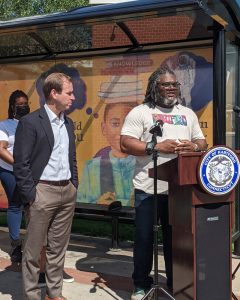
In addition to overseeing UConn Health’s collection, Rochester, himself an artist, mentors emerging artists and is a key figure in Greater Hartford’s art scene, with current or recent ties to the Windsor Art Center, Connecticut Arts Alliance, National Leaders of Color Fellowship, 224 EcoSpace, and the Artists of Color Accelerate. He also has his own art business, Rochester Fine Art.
“Art is something that has gotten me through the toughest of times, and it’s been there in the best of times; I have literally had art along the way,” Rochester says. “Since I was 7 years old, I was destined to do the work that I’m doing right now, and I really don’t see myself doing anything else ever again, whether I’m showing other artists or helping them develop professionally, or showing my own work and making a difference that way, I think this is important work that should be done.”
The Artists of Color Accelerate formed in 2021 as an accelerator program for local artists. Rochester was one of the 10 artists in the first cohort of Artists of Color Accelerate fellows. Today he is the program manager.
When you’re surrounded by only people who look like you, chances are, you’re not really going to know how to adequately engage other folks. — Andre Rochester
“We take artists of color from Greater Hartford, and we pair them with organizations in the arts throughout the region,” Rochester says. “They work on a collaborative project together, and this is a way that they can get their professional development because they also get business classes and different types of training along the way. We’re opening doors to these artists, giving them an opportunity to work as partners on something, but also to build a relationship with them, in hopes that there will be other opportunities for that artist, or that the artist can help make for other people. This is a way to ensure that arts organizations are showing an appropriate amount of support to the artists of color community.”
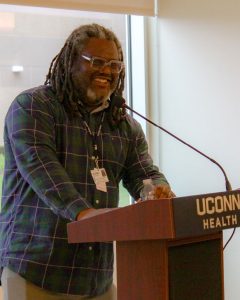
He says it’s a community that historically has faced barriers, either to access such opportunities, or to being seen in communities outside their own.
“People always gravitate to whom and what they’re familiar with, and when you’re surrounded by only people who look like you, chances are, you’re not really going to know how to adequately engage other folks,” Rochester says. “So this is one way to bridge that gap, but it’s also raising awareness.”
Last month the Amistad Center for Art and Culture presented Rochester with a Spirit of Juneteenth Award for his service to the art community in Hartford.
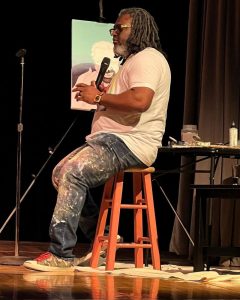
But even bigger than his advocacy for diversity in art is his advocacy for art for everyone.
“As a part of our culture, art is there to tell the story of the world around us, and art is what we have to document the world, throughout history, whether it be from cave drawings or from various parts of the literary world, it’s all art,” Rochester says. “And when you don’t involve the arts, you leave out a big part of our storytelling. It literally tells the world, it tells everybody else, who we are in this moment, in this location. And taking it a step further, it tells who we are in this moment for other people to look back and to learn about what the world was like.”
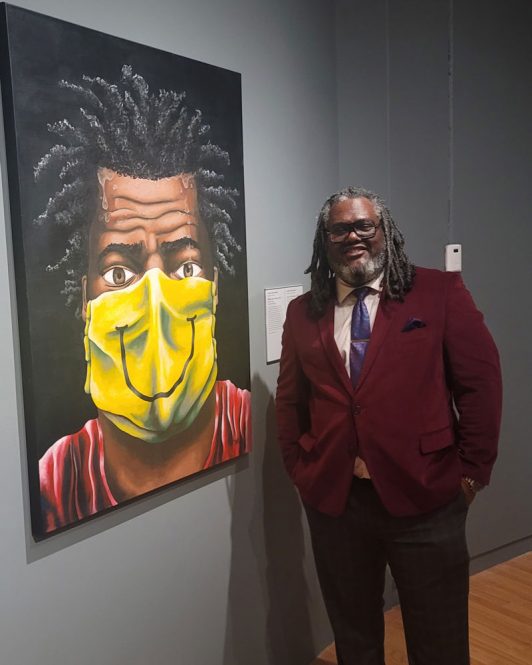
Hartford’s Wadsworth Atheneum has a special exhibition running through next month titled “Styling Identities: Hair’s Tangled Histories.” Rochester is part of the exhibit’s advisory committee.
“The intent behind the show is to highlight hair as a form of expression, be it through culture or religious significance or through making a statement,” he says. “Everybody’s got some kind of story revolving around their hair, how they style it, why they wear it the way they do what it’s connected to. And this is all about highlighting those stories.”
One of those stories is his. The Wadwsorth asked him to include one of his paintings in the exhibit.
“My painting is an illustration depicting my interpretation of the experience of 2020,” Rochester says. “It’s called ‘Wear Your Mask,’ and a lot of what I went through in 2020 has to do with why I decided to grow my hair out. It’s really about embracing myself, and turning and looking inward and being more who I am.”
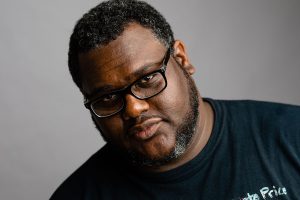
Rochester says the Wadsworth is the place that made him want to become an artist.
“Having my work on display in this exhibit holds personal meaning, but to be included among the art displayed in this exhibit is an opportunity many do not get to have while alive,” he says.
Just last month, Rochester started a term as an ex-officio member of the Wadsworth’s board of trustees, chosen by both CEO Jeff Brown and Hartford Mayor Arunan Arulampalam to serve as the liaison between the museum and the mayor’s office.
On Aug. 4, Rochester will be there to give a presentation about his exhibit from 1 to 2 p.m.
As for UConn Health’s art collection, with its estimated 2,800 works of art, Rochester says it’s “like a mini-museum.” Some of them go back 45 years. Nearly all of them have been donated. Donations are still coming in, and he welcomes them — he has guidelines for prospective donors on his art collection home page.
And while he manages UConn Health’s collection, Rochester hints at plans for a new space to rotate special health care-focused exhibits, and also to showcase employee artwork — additional details to come on those.
